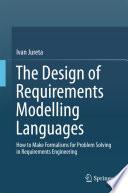Designed as a text for undergraduate students (B.Tech./B.E.) of Computer Science and Engineering and IT, Mechanical Engineering and Mechatronics Engineering, and postgraduate students (M.Tech./M.E., M.Sc.) of Computer Science and Engineering and IT and Industrial Engineering, as well as for Bachelor and Master of Computer Applications (BCA/MCA), this well-organized book gives an in-depth analysis of the concepts of system simulation modelling and simulation languages. The book provides detailed discussions on the fundamental and advanced concepts of simulation. The book begins with the concept of system and the different terminologies associated with the system. Then it presents the different methods of random number generation and their tests. Besides, the text dwells on different probability distributions and their random variates, which are used in the simulation model, and describes various simulation languages such as GPSS, Simula I, SIMSCRIPT, CSL, GASP, OPS-3, DYNAMO, SIMAN and SLAM II. Further, it gives a comprehensive coverage of different queueing systems with illustrative examples as well as the logics of simulation model for both single-server and parallel-server queueing systems. The concluding chapters deal extensively with GPSS language, Arena simulation software and ProModel simulation software. Key Features • Follows a step-by-step approach to derive the test results. • Gives a large number of solved examples and well-designed chapter-end questions. • Includes several real-life Case Studies to illustrate the concepts discussed.
In Chapter 7, the logic of simulating different real-life situations using high-level
languages has been presented. If one closely examines different segments of
those flow charts, it will be clear that there exist some standard modules such as
customer arrival time module, service completion time module, adding customers
into queue module, end of simulation module, etc. If such modules are made into
different blocks/subroutines which can be invoked at appropriate point in the
main ...










